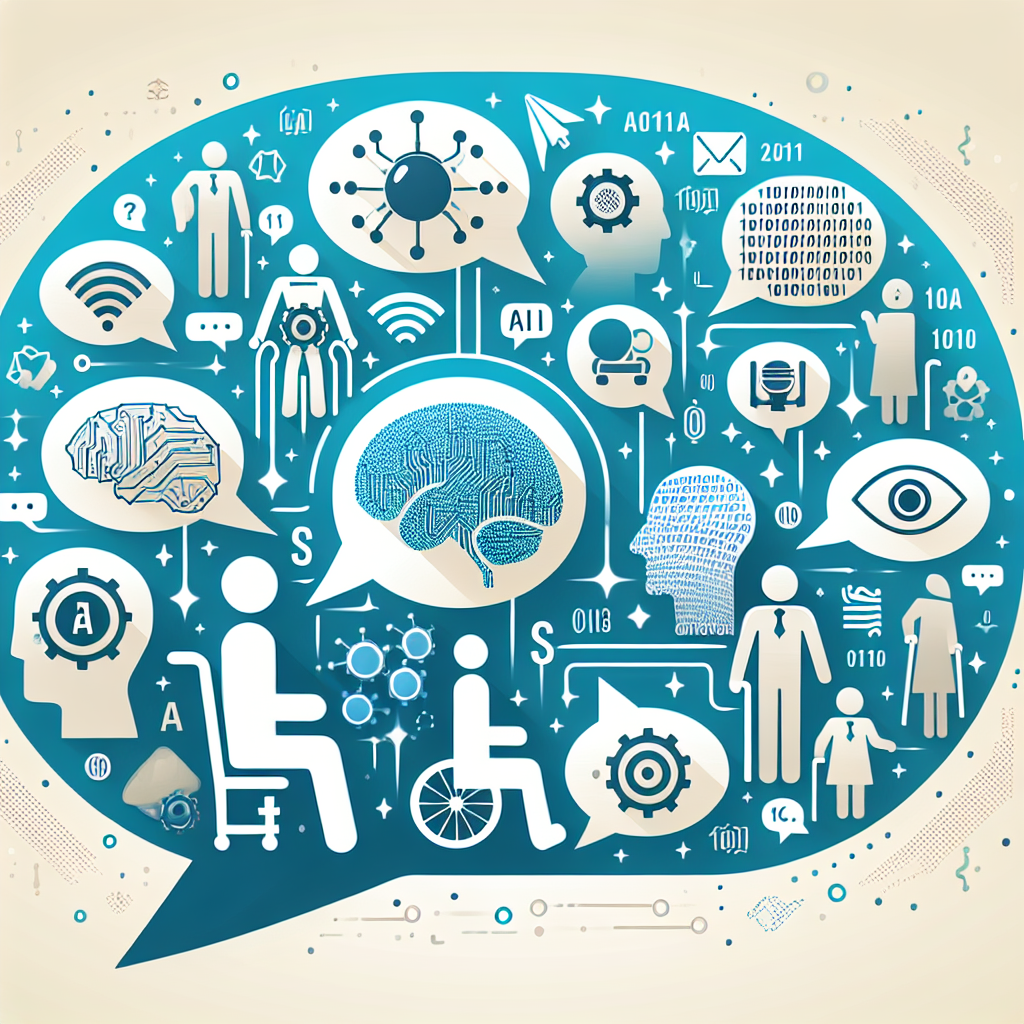Conversational AI, also known as conversational artificial intelligence, is a technology that enables machines to interact with humans in a natural and conversational way. This technology is revolutionizing how we interact with computers and devices, making it easier for people to access information, services, and support. Conversational AI is being used in a wide range of applications, from customer service and virtual assistants to healthcare and education.
One of the key benefits of conversational AI is its ability to enhance the accessibility of technology for people with disabilities. By providing a more natural and intuitive way to interact with computers and devices, conversational AI can help people with disabilities access information and services more easily and independently. This technology is particularly valuable for people with visual or motor impairments, as it can provide them with a more accessible and inclusive way to interact with technology.
Conversational AI is also helping to bridge the digital divide by making technology more accessible to people who may not have the skills or resources to use traditional interfaces. By enabling people to interact with technology using natural language, conversational AI is making it easier for people to access information and services online, regardless of their level of digital literacy.
In addition to enhancing accessibility, conversational AI is also improving the user experience for everyone. By providing a more natural and conversational way to interact with technology, conversational AI is making it easier for people to find information, complete tasks, and get support. This technology is particularly valuable in situations where people may not have the time or ability to navigate complex interfaces, such as when they are driving or multitasking.
Conversational AI is being used in a wide range of applications to enhance accessibility and improve the user experience. Some of the key applications of conversational AI include:
1. Customer service: Conversational AI is being used to provide customer support through chatbots and virtual assistants. These tools can help customers find information, make purchases, and get support in a more efficient and convenient way.
2. Healthcare: Conversational AI is being used in healthcare to provide patients with information and support. For example, virtual health assistants can help patients schedule appointments, access medical records, and get answers to common health questions.
3. Education: Conversational AI is being used in education to provide students with personalized support and feedback. Virtual tutors and assistants can help students with homework, provide study tips, and answer questions in a more interactive and engaging way.
4. Smart home devices: Conversational AI is being used in smart home devices to enable users to control their devices using voice commands. These devices can help people with disabilities access and control their home devices more easily and independently.
Overall, conversational AI is revolutionizing how we interact with technology, making it more accessible and user-friendly for everyone. By providing a more natural and intuitive way to interact with computers and devices, conversational AI is helping to enhance accessibility and improve the user experience across a wide range of applications.
FAQs:
1. What is conversational AI?
Conversational AI is a technology that enables machines to interact with humans in a natural and conversational way. This technology is revolutionizing how we interact with computers and devices, making it easier for people to access information, services, and support.
2. How is conversational AI enhancing accessibility?
Conversational AI is enhancing accessibility by providing a more natural and intuitive way to interact with technology. This technology is particularly valuable for people with disabilities, as it can help them access information and services more easily and independently.
3. What are some key applications of conversational AI?
Some key applications of conversational AI include customer service, healthcare, education, and smart home devices. This technology is being used in a wide range of applications to enhance accessibility and improve the user experience.
4. How is conversational AI bridging the digital divide?
Conversational AI is bridging the digital divide by making technology more accessible to people who may not have the skills or resources to use traditional interfaces. By enabling people to interact with technology using natural language, conversational AI is making it easier for people to access information and services online.
5. What are some benefits of conversational AI for users?
Some benefits of conversational AI for users include a more natural and conversational way to interact with technology, easier access to information and services, and improved user experience. This technology is helping to make technology more accessible and user-friendly for everyone.

